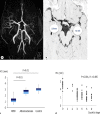Stroke in Asia
- PMID: 38657577
- PMCID: PMC11250668
- DOI: 10.1159/000538928
Stroke in Asia
Abstract
Background: There is a significant burden of stroke in Asia. Asia has the largest population in the world in 2023, estimated at 4.7 billion. Approximately 9.5-10.6 million strokes will be anticipated annually in the backdrop of a diverse group of well-developed and less developed countries with large disparities in stroke care resources. In addition, Asian countries are in varying phases of epidemiological transition.
Summary: In this review, we examined recent epidemiological features of ischaemic stroke and intracerebral haemorrhage in Asia with recent developments in hyperacute stroke reperfusion therapy and technical improvements in intracerebral haemorrhage. The article also discussed the spectrum of cerebrovascular diseases in Asia, which include intracranial atherosclerosis, intracerebral haemorrhage, infective aetiologies of stroke, moyamoya disease, vascular dissection, radiation vasculopathy, and cerebral venous thrombosis.
Key messages: The review of selected literature and recent updates calls for attention to the different requirements for resources within Asia and highlights the breadth of cerebrovascular diseases still requiring further research and more effective therapies.
Keywords: Aetiology; Asian stroke pattern; Classification; Epidemiology; Stroke intervention; Stroke systems of care.
© 2024 The Author(s). Published by S. Karger AG, Basel.
Conflict of interest statement
The authors have no conflicts of interest to declare.
Figures




References
-
- Krishnamurthi RV, Ikeda T, Feigin VL. Global, regional and country-specific burden of ischaemic stroke, intracerebral haemorrhage and subarachnoid haemorrhage: a systematic analysis of the global burden of disease study 2017. Neuroepidemiology. 2020;54(2):171–9. - PubMed
Publication types
MeSH terms
LinkOut - more resources
Full Text Sources

